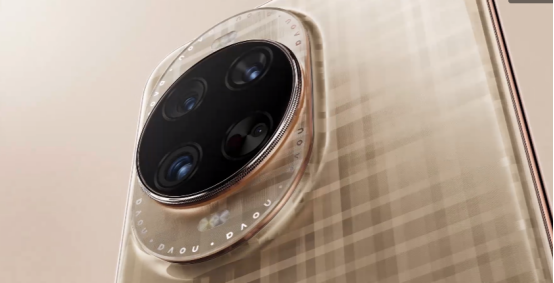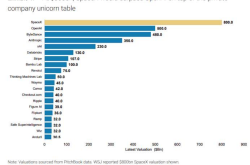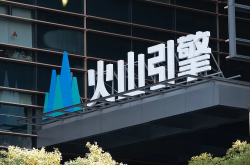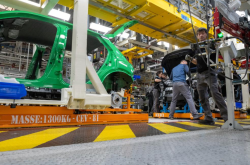China's Smartphone Battle Royale: Huawei's Offensive, Apple's Defensive, and Europe's Pivotal Role
![]() 06/12 2025
06/12 2025
![]() 675
675

As Apple slips out of China's top five smartphone vendors, a ceasefire in the European patent war opens a new frontier for domestic players.
In February 2025, the domestic smartphone market saw significant shifts. Apple fell out of the top five for the first time, capturing a mere 12.4% share and ranking sixth, marking a new low in recent years. This reshuffle not only highlights the surge of domestic manufacturers but also underscores profound changes in market competition dynamics. Huawei, fueled by strong demand for its nova 13 series and flagship P70 series, witnessed a 28.5% year-on-year sales surge, reclaiming the domestic market lead with a 19.4% share.
On the other side of this fiercely competitive landscape, the European market is embracing new changes. OPPO and vivo have resolved their patent disputes with Nokia, while OnePlus has resumed e-commerce sales in Germany. After four consecutive years of decline, the European smartphone market recorded its first growth in 2024, yet Samsung, Apple, and Xiaomi still dominate with over 70% of the market share.
01 Domestic Market: Fierce Competition, Huawei Leads, Apple Retreats
China's smartphone market in 2025 saw rapid weekly ranking changes. In early February, vivo topped the list with a 19.1% share, while Huawei slipped to third with 16.6%. Within a month, Huawei reclaimed the top spot with 17.1%, closely followed by vivo at 16.8%. This volatility underscores the intensity of market competition.
Huawei's recovery can be termed an industry miracle. Breakthroughs in Kirin chips and the maturity of the HarmonyOS ecosystem have enabled Huawei's multi-line product strategy, spanning high-end Mate series, mid-range nova series, and foldable screen innovations. In Q1 2025, Huawei's shipments steadily recovered, with flagship supply stabilizing and lower-end products incorporating domestic chips.
The national subsidy policy emerged as a pivotal market variable. In Q1 2025, driven by the combination of the "national subsidy" policy and the Spring Festival sales season, China's smartphone shipments increased by 3.3% year-on-year to 71.6 million units.
The Android market grew by 5.3% year-on-year, whereas the iOS market faced internal and external pressures, declining by 9.0% year-on-year. Apple's best-selling Pro and Pro Max models struggled to qualify for national subsidies, hindering its market performance.
OPPO's resurgence is also noteworthy. In mid-April 2025, OPPO surpassed Xiaomi with a 17.0% share (including OnePlus's 2.1%) to rank second. This leap was fueled by its new product strategy: the Find X8 series' continued success and the new foldable Find N5 series driving a triple-digit year-on-year increase in the above-$1,000 market segment.
With the Reno series and sub-brand OnePlus Ace series, OPPO leads the $300-$500 mid-range market.
The domestic market's competitive landscape has solidified, with six major brands accounting for 95.4% of the share. However, the brand gap is minimal, with vivo, Xiaomi, OPPO, and Honor concentrating their shares in the 13%-17% range. Any minor misstep could drastically alter the rankings.
02 Technological Breakthroughs: Foldable Screens and AI Define New Paths
As hardware innovation hits a bottleneck, foldable screens emerge as a breakthrough for domestic smartphones in the high-end market. In Q1 2025, China's foldable smartphone shipments reached 2.84 million units, up 53.1% year-on-year. Huawei dominated with over three-quarters of the market share, thanks to its comprehensive product lineup; Honor remained second with a 9.1% share; OPPO reclaimed third place with its new lightweight and large foldable Find N5 series.
Globally, foldable screen growth is even more remarkable. In 2025, global foldable smartphone shipments are expected to exceed 220 million units, a 68% increase over 2024. Flexible screen technology maturity has driven a 30% cost reduction, and hinge durability has improved to 200,000 folds. Foldable screen + satellite communication models offer an 18% higher premium than ordinary flagship models, proving consumers' willingness to pay more for innovative features.
AI imaging technology has become a flagship standard. In 2025 flagship models, 76% are equipped with multi-frame fusion algorithms and real-time semantic segmentation technology. Leading brands achieve 3 trillion operations per second through self-developed NPUs, quadrupling night shooting speed. The proportion of phones supporting 8K video recording jumped from 18% in 2024 to 52% in 2025, and optical image stabilization systems' penetration in mid-range models reached 67%.
Advancements in communication capabilities form the third technological pillar. In Q3 2025, domestic smartphones supporting Beidou short message functions shipped over 18 million units, expanding emergency communication scenario coverage to 93%. Meanwhile, the Snapdragon X85 chipset with millimeter-wave technology stabilizes download speeds above 8Gbps, driving 5G Advanced network users to 29%.
03 European Journey: Restarting the Market After the Patent War
After two years of patent war winter, Chinese smartphone brands are returning to the European battlefield. In early 2024, OPPO and vivo successively resolved patent disputes with Nokia. This settlement is significant: before the lawsuit, OPPO + OnePlus's European market share peaked at 7%-8% but fell to around 2% during the dispute.
The European market is recovering. In 2024, smartphone shipments in Europe (excluding Russia) grew by 5%, the first increase after four consecutive years of decline. High-end market demand resilience, coupled with the replacement cycle of mid-range and low-end smartphones purchased during the pandemic, drove market growth. Samsung solidified its position as Europe's largest smartphone vendor with 46.4 million units shipped, followed by Apple and Xiaomi.
Chinese brands returning to Europe adopt differentiated strategies:
- OPPO focuses on key markets: Spain, Italy, Romania, and Portugal.
- vivo prepares for a comeback: In Q1 2025, it used the "national subsidy" policy to clear channel inventory, reduce burden, and prepare for new product launches across multiple price segments.
- OnePlus pioneers OPPO's European resurgence: Resuming e-commerce sales in Germany.
European market challenges remain severe. Samsung, Apple, and Xiaomi hold over 70% of the market share, with other brands struggling in single digits. Chinese brands' core advantages lie in the $600-$700 price segment, especially below $400-$500.
Honor and realme have shown double-digit growth in Europe. In Q3 2023, Honor was the only top-5 brand to report year-on-year growth (+8%), entering the 3% range; realme stabilized its share between 3%-5%. TECNO and Infinix, Transsion brands, achieved triple-digit growth in the Eastern European market through ultra-cost-effective strategies.
04 Apple and Samsung's Defense and Counterattack
Faced with Chinese brand onslaught, Apple shows signs of fatigue in the Chinese market. In the W6 cycle of 2025, Apple fell to sixth place with a 12.4% share, hitting a recent low. Compared to Q1 2024, its share declined by 2.4 percentage points, a 15% year-on-year drop. Alarmingly, traditionally popular as holiday gifts, iPhones failed to enter the top five during the 2025 Spring Festival.
Apple's plight stems from dual pressures: Huawei's encroachment on the high-end market and Xiaomi/Honor's mid-range competition. Geopolitical uncertainty and macroeconomic fluctuations exacerbate Apple's China pressures. Analysts predict further share erosion if Apple fails to stimulate demand through price cuts before the September new phone launch.
Samsung adopts a more flexible strategy. In the European market, Samsung achieved its highest high-end market shipments since 2019 with the Galaxy S24 series. Its success hinges on efficient Galaxy AI and Olympics-centered marketing campaigns, coupled with comprehensive promotions.
Facing new EU regulations, Samsung swiftly adjusted its product line: not launching the Galaxy A06 in Europe while offering six years of software and security support for the Galaxy A16.
Apple aims to reverse its decline with mid-range models. The iPhone SE4 launch is crucial, expected to maintain Apple's mid-range competitiveness. In Europe, the newly launched iPhone 16e is vital for mid-range competitiveness and expanding Apple Intelligence device coverage.
05 Future Battlefield: Ecosystem Building and Rule Adaptation
New EU regulations hang like Damocles' sword over smartphone manufacturers. By June 20, 2025, mobile phones must provide five years of software support and security patches, per the EU Ecodesign Directive. This requirement particularly impacts mass-market manufacturers, as limited profit margins mean potential price hikes could quickly deter demand.
Software ecosystem competition intensifies. In 2025, 73% of multi-device collaboration-supporting mobile phone users achieved smart home device linkage. Manufacturers' "super desktop" systems enhance mobile-tablet switching efficiency by 40%, and AR glasses product sales surged 145% year-on-year. This ecological shift transforms mobile phones from communication tools to intelligent hubs, with the related accessories market expected to exceed $87 billion in 2025.
Huawei designated 2025 as critical for the HarmonyOS ecosystem. As the first product pre-installed with HarmonyOS Next, the P Series X series underscores Huawei's commitment to promoting the ecosystem. However, challenges persist: Huawei cannot use Google's GMS services overseas. Promoting its self-developed OS abroad requires continuous consumer education, which is costly.
Emerging manufacturers explore new software monetization paths. Counterpoint Senior Analyst Lin Keyu notes: "Relying solely on operator channels for profits is difficult. Smartphone manufacturers must explore AI-driven traffic monetization opportunities, such as subscription content, while strengthening app store operational linkages with overseas local content providers."
Regional supply chain reconstruction is inevitable under geopolitics. US chip export control list expansion increased Chinese brands' inventory turnover days by 22. India's manufacturing policy prompted capacity shifts to Vietnam and Mexico, with the Southeast Asian SKD model emerging as a cost-effective new choice, offering a 17% advantage.
In European streets, OnePlus experience store signs re-ignite; Beijing's Sanlitun Apple Store sees sparse crowds; Huawei flagship stores are abuzz with foldable smartphone enthusiasts. In 2025, smartphone victory hinges on more than hardware parameters, encompassing satellite communication coverage, cross-device ecosystem collaboration efficiency, and EU regulation adaptation speed.
As Huawei controls 75% of the foldable screen market and OnePlus assails Apple's tablet territory, the competition rules have been rewritten. Over the next three years, the smartphone industry will enter a new stage, "emphasizing both functional breakthroughs and ecosystem building." Brands integrating cutting-edge technology and fostering differentiated experiences will gain significant competitive advantages.
Text and image source: official websites and the internet
Due to market data dynamics and differing statistical agencies/timing, article data may exhibit slight variations.






